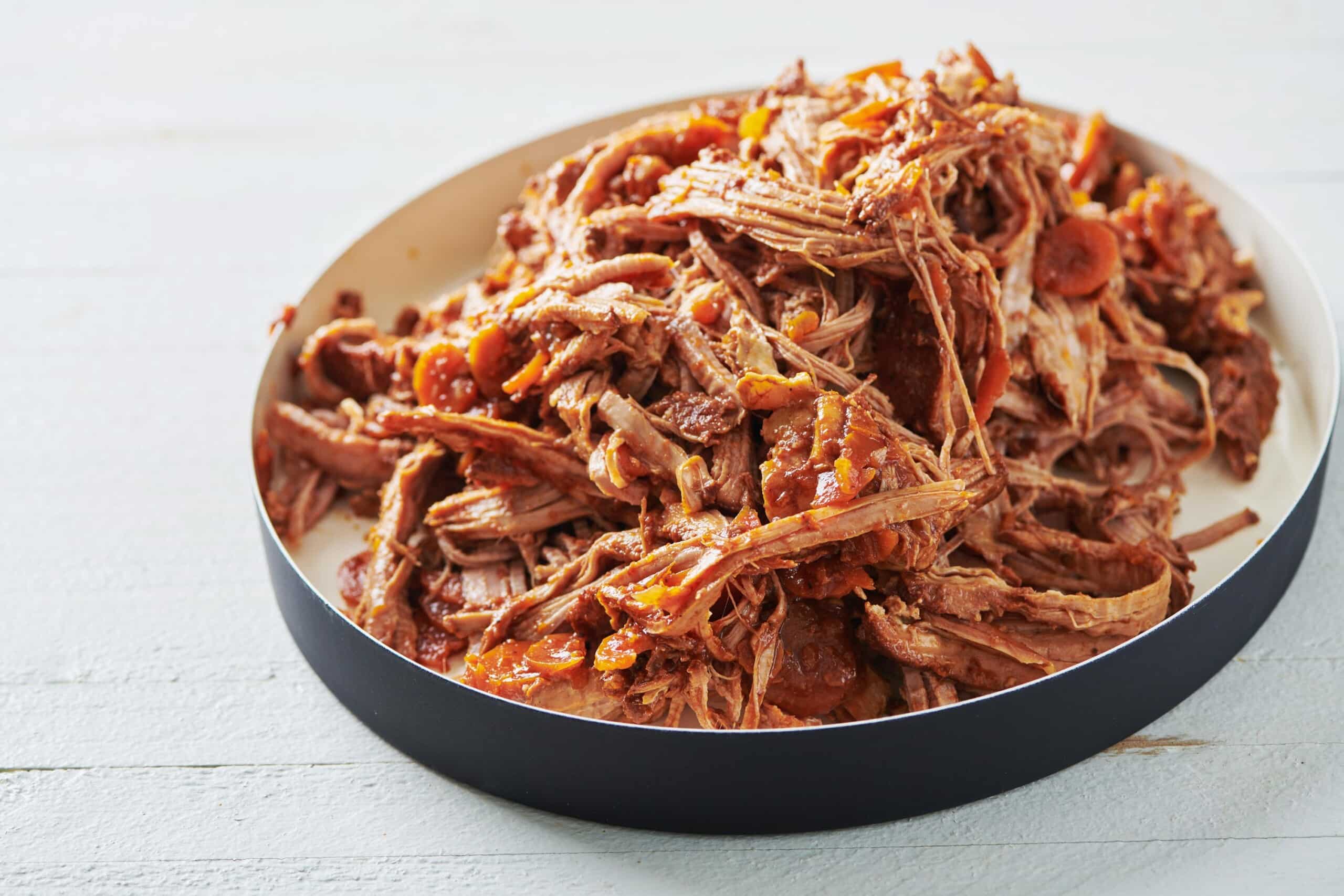
Ever wondered what makes pulled pork so irresistibly delicious? Beyond its mouthwatering taste and tender texture, there's a whole world of nutrition facts that might just surprise you. Pulled pork, a staple in barbecue cuisine, often gets a bad rap for being unhealthy. But did you know that when prepared thoughtfully, it can be part of a balanced diet? Yes, you read that right! From its protein content to the various ways it can be made healthier, we're diving into the 12 nutrition facts about pulled pork that everyone should know. Whether you're a fitness enthusiast or just someone looking to enjoy this classic dish without the guilt, these insights will change the way you view pulled pork. Let's get started on this flavorful journey, shall we?
Key Takeaways:
- Pulled pork is high in protein and vitamins, but watch out for high sodium content. Pair it with healthy sides for a balanced meal.
- Opt for leaner cuts and homemade sauces to make pulled pork a healthier and flavorful choice. Get creative with different cuisines for variety.
What Is Pulled Pork?
Pulled pork, a staple in American barbecue, involves slow-cooking pork until it's tender enough to be "pulled" apart with forks. This method results in juicy, flavorful meat often seasoned with a variety of spices and sauces. Whether enjoyed in a sandwich, as a main dish, or as part of a larger meal, pulled pork is beloved for its versatility and rich taste.
Nutritional Profile of Pulled Pork
-
Calories: A typical serving of pulled pork can contain around 220 calories. Portion size plays a crucial role in determining calorie intake.
-
Protein: High in protein, a serving provides about 23 grams, essential for muscle repair and growth.
-
Fat Content: Pulled pork has about 11 grams of fat per serving, with saturated fat making up a portion of this. The exact amount can vary based on the cut of pork and preparation method.
-
Carbohydrates: Generally low in carbs, pulled pork itself contains less than 5 grams per serving. However, sauces or sides can add to the carb count.
Health Benefits and Considerations
-
Rich in Vitamins and Minerals: Pulled pork is a good source of vitamins B6 and B12, thiamin, niacin, and minerals like zinc and phosphorus, supporting various bodily functions.
-
Consider Sodium Content: Many recipes and commercial options for pulled pork are high in sodium, which can impact blood pressure. Opting for homemade versions allows for better control over sodium levels.
-
Balance with Healthy Sides: Pairing pulled pork with sides like coleslaw, beans, or vegetables can create a more balanced meal, adding fiber and nutrients.
Cooking Tips for Healthier Pulled Pork
-
Choose Leaner Cuts: Opt for leaner cuts of pork, such as the tenderloin, to reduce fat intake without sacrificing flavor.
-
Make Your Own Sauce: Homemade sauces can be lower in sugar and sodium than store-bought versions, offering a healthier alternative.
-
Slow Cook to Perfection: Slow cooking allows for the use of less oil or fat while still achieving tender, flavorful meat.
Pulled Pork in Various Cuisines
-
Versatility in Recipes: Beyond traditional barbecue, pulled pork can be found in tacos, salads, and even pizzas, showcasing its versatility in various cuisines.
-
Cultural Variations: Different cultures incorporate unique spices and cooking methods, offering a wide range of flavors and experiences with pulled pork.
Pulled pork, with its rich flavor and versatility, can be a nutritious part of a balanced diet when prepared thoughtfully. By choosing leaner cuts, making sauces from scratch, and pairing with healthy sides, one can enjoy this delicious dish while keeping health considerations in mind.
A Final Scoop on Pulled Pork Nutrition
Pulled pork's a favorite for many, and now you know why it's not just about taste but also about the benefits it brings to the table. Rich in protein, vitamins, and minerals, this dish can be a part of a balanced diet when consumed in moderation. Remember, the key lies in how it's prepared. Opting for lean cuts and mindful of the cooking method can make all the difference. Also, balancing your plate with veggies and whole grains alongside pulled pork ensures a nutritious meal. So next time you're enjoying this delicious dish, you'll appreciate not just the flavors but the nutritional value it adds to your diet. Keep these facts in mind, and you'll make informed choices that contribute to a healthier lifestyle.
Frequently Asked Questions
Was this page helpful?
Our commitment to delivering trustworthy and engaging content is at the heart of what we do. Each fact on our site is contributed by real users like you, bringing a wealth of diverse insights and information. To ensure the highest standards of accuracy and reliability, our dedicated editors meticulously review each submission. This process guarantees that the facts we share are not only fascinating but also credible. Trust in our commitment to quality and authenticity as you explore and learn with us.


